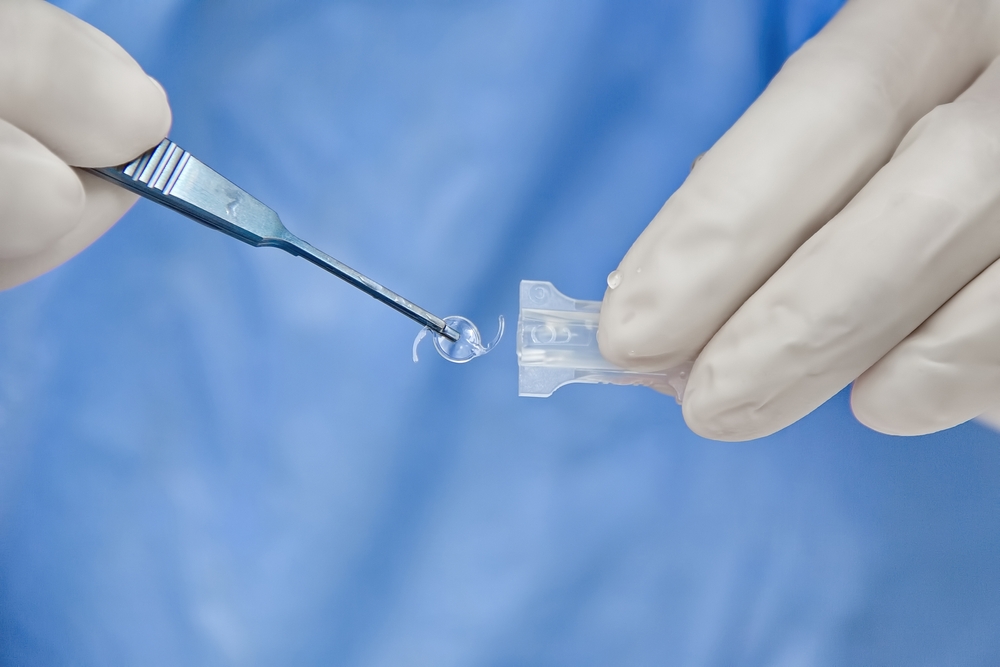5 Tips When Choosing an IOL For Cataract Surgery
When choosing an intraocular lens, also known as an IOL, to replace the eye’s natural lens during cataract surgery, many options are available that impact your long-term vision results. Navigating these choices can feel overwhelming at first glance.
By understanding a few key tips about IOLs, you can have an informed discussion with your ophthalmologist and set realistic expectations about life after surgery. Keep reading to learn more about IOLs, including five tips when choosing an IOL for cataract surgery!
What is an IOL?

An intraocular lens is an artificial lens implanted in the eye to replace the natural lens when
vision becomes clouded due to a cataract. During cataract surgery, your cataract surgeon will remove the hazy natural lens and insert the artificial IOL in its place inside the eye.
IOLs are made of plastic, silicone, or acrylic materials and come in different designs to address nearsightedness, farsightedness, astigmatism, or presbyopia after cataract removal.
Why Do I Need an IOL?
Your entire natural lens has to be removed during cataract surgery. However, the lens plays an essential role in focusing light for clear vision, so it must be replaced.
If you were left without a lens after cataract removal, vision would not be possible without very powerful glasses. An artificial intraocular lens implant is vital to take over the refractive power of the natural lens.
Some IOLs can potentially improve vision beyond what was possible before developing cataracts. Many patients find they no longer require glasses after cataract surgery with certain IOLs.
How Do I Choose the Right IOL?
Choosing the right IOL can be challenging. This decision is one of the most important ones you will have to make during the cataract surgery process.
Here are five tips to help you choose the right IOL for you:
1. Know What Your Vision Needs Are
Consider your vision goals after cataract surgery and what level of visual freedom is most important in your lifestyle. For an active life with less dependence on glasses, premium IOL options like multifocal or extended depth of focus lenses can provide a range of sharp vision.

If you don’t mind wearing reading glasses sometimes, a basic monofocal IOL may suffice for general tasks like driving and watching TV. Also, consider visual priorities like pursuing hobbies up close versus seeing clearly at a distance.
And remember, even with premium lenses, you may need to wear glasses sometimes for highly specialized activities like intricate sewing work.
2. Set Up a Budget
Although they provide greater visual freedom, premium IOLs are often more of an investment compared to standard IOLs. Most people who choose a premium IOL believe that the extra cost is well worth it.
Before evaluating which IOL is best for you, it’s important to determine your budget.
3. Consider Your Astigmatism
If you have astigmatism, your eye doctor may recommend a toric IOL. Toric IOLs can help correct your astigmatism so you are less reliant on glasses after surgery.
Astigmatism causes blurred vision at all distances by preventing light from properly focusing on the retina. Toric IOLs are designed with an optical power tailored to counteract the irregular curvature of an eye with astigmatism.
This helps bend incoming light correctly for clearer sight, especially for distance vision. If your astigmatism is mild, a standard IOL may still work reasonably well.
However, those with higher astigmatism often benefit more from a toric IOL implantation combined with cataract removal.
4. Talk With Your Eye Doctor
Your eye doctor will help you decide which IOL is best for you based on your vision needs and goals. Discussing your options with your eye doctor will help you evaluate your needs and narrow down your options.
5. Research Your Options

There are many IOL options, and it’s important that you have all the information to make this decision. Ask your eye doctor any questions about your choices that you may have about IOLs.
It’s also a good idea to research your options to help determine which one may be best for you.
What Happens During Cataract Surgery?
Cataract surgery is usually an outpatient procedure taking less than thirty to perform. First, numbing eye drops are applied to your eyes to ensure that you are comfortable.
Your cataract surgeon will make a tiny incision in the surface of the eye to access the cloudy lens behind the colored iris. Using advanced techniques, they will break up the natural lens into tiny pieces.
Then, they will remove the tiny pieces of the lens in one piece with gentle suction. The cataract surgeon then inserts and locks in place an artificial intraocular lens (IOL) where the natural lens used to be.
This immediate lens replacement enables light to focus properly on the retina again after healing. The tiny incision in your cornea will heal naturally during your recovery without the need for stitches.
Cataract surgery is usually quick and highly successful in restoring vision obscured by cataracts.
Do you need help determining which IOL may be best for you? Schedule a cataract evaluation at Complete Eyecare West in Columbus, OH, today!







